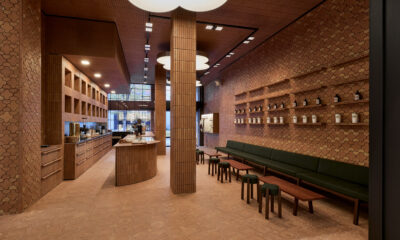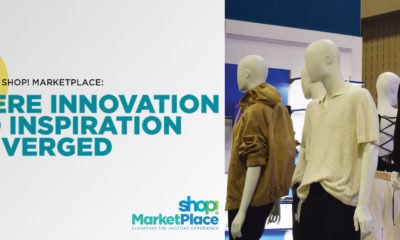More than two years ago, the Kroger Co. (Cincinnati) started down a new path in the company’s 126-year history by deciding to design its first supermarket using the USGBC’s LEED green building rating system. At the time, Ken Pray, Kroger’s director, store design, said customers were sending a clear message that environmental awareness was a priority and that they expected the grocery chain to take some leadership in this area.
Kroger was already implementing several energy-saving technologies, such as skylights and heat reclamation, features not always visible to customers. At the same time, the company was redesigning a Fred Meyer grocery store in Portland, Ore., with a new merchandising concept that sought to make organic products mainstream. “We thought if we’re going to do something unique with the merchandise concept, we also needed to do more with the store design,” says Pray. Working with MulvannyG2 (Portland, Ore.), the company began navigating the LEED process and, in July, celebrated the store’s official reopening. While a three-month performance period is underway to gather real-world data as part of the final LEED submission process, there’s still plenty to talk about.
Going for LEED
For the Fred Meyer project, Martin Segura, an associate at MulvannyG2, says that designers chose to use the LEED Existing Building (EB) program. One consideration in using LEED EB is its focus not only on the building’s physical systems (equipment and design) but also the way it’s occupied and operated. This required designers to focus on store operations – something that Randall Douthit, Kroger Regional Construction director, identifies as one of the biggest challenges in the Hawthorne project. “It’s extremely difficult to impact vendors, manufacturers and warehousing, even though those all affect the energy costs of the project,” he says.
Focusing on the areas where it could make a difference, Fred Meyer worked with its local landscape company to replace all of its gas-powered lawn care equipment with electric. Landscaping is now done using organic fertilizer and pressure-washing equipment for sidewalks and the parking lot uses a retention device that recycles water. Inside, employees use a new green cleaning program. All of these changes contributed to LEED points.
Pick and Choose
Advertisement
Still, it’s not that simple to earn points. MulvannyG2’s senior associate, Randy Sauer, says you have to learn that you can’t go for every LEED point. “You have to make decisions based on what will have the biggest impact,” he says.
During a prerequisite energy audit, designers discovered that the store’s refrigeration system and heating offset from its rooftop cooling equipment were two of the store’s biggest sources of energy consumption. So they targeted this area for some serious equipment upgrades. Designers also replaced all the incandescent bulbs with fluorescent tubes and added more than 35 skylights to the rooftop to illuminate the second floor. A new glazed glass enclosure at the entrance and clerestory windows bring more natural light inside and work in conjunction with a new dimming program to reduce the store’s energy load.
The Hawthorne project also earned LEED credit for adding extra insulation to the walls of its 1950s building to improve energy efficiency. However, based on the sheer amount of data that would need to be tracked down on materials used in the store, such as a product’s recycled content and location of origin, designers opted not to apply for points in the materials category.
While Kroger awaits certification on its Fred Meyer store, the company is already sharing its green message through an in-store signage program that talks about the sustainable materials and design aspects of the store. Kroger will evaluate the store before considering its next step, including whether it seeks LEED certification again or not. “We’re always looking for way to reduce energy,” Pray says. “There’s lots of interest within the company on what’s going on.”


 Headlines1 week ago
Headlines1 week ago
 John Ryan2 weeks ago
John Ryan2 weeks ago
 Headlines7 days ago
Headlines7 days ago
 Headlines2 weeks ago
Headlines2 weeks ago
 Headlines1 week ago
Headlines1 week ago
 Retail Buzz3 days ago
Retail Buzz3 days ago
 Headlines1 week ago
Headlines1 week ago
 Headlines1 week ago
Headlines1 week ago





















